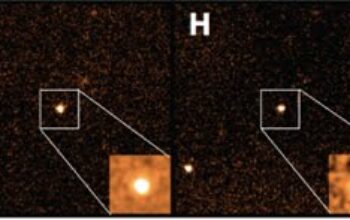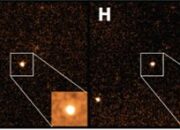Chemistry, as a central science, grapples with the intricate interplay of atoms and molecules, elucidating their interactions and behaviors. Within this tapestry of chemical phenomena lies the profound question: Is all of chemistry computable? The inquiry traverses various domains including theoretical foundations, practical applications, limitations, and evolving computational methodologies. This exploration mandates an appreciation of both classical principles and contemporary advancements in computational chemistry.
At the heart of the computability discourse lies the notion of mathematical formalism. Chemistry fundamentally relies on the principles of quantum mechanics, which describes the behavior of matter at the atomic and subatomic levels. Quantum chemistry employs mathematical models to approximate the properties of molecules. The Schrödinger equation, quintessentially elegant, governs the wave function of a quantum system. Yet, the complexity intrinsic to multi-electron systems often renders analytical solutions intractable, thus prompting reliance on numerical methods.
One of the foremost computational techniques is Density Functional Theory (DFT). DFT enables chemists to calculate the electronic structure of atoms and molecules with commendable accuracy while obviating the computational expenses associated with methods that necessitate the solution of the many-body Schrödinger equation directly. Consequently, DFT has catalyzed significant advancements in materials science, providing insights into catalytic processes, material stability, and even drug design.
However, the realm of computability extends beyond mere electronic structure calculations. Physical chemistry delves into thermodynamic properties and kinetics, where computational approaches must grapple with macroscopic phenomena. Molecular dynamics simulations exemplify this facet, facilitating the examination of molecular interactions over time by integrating Newton’s equations of motion. These simulations elucidate conformational changes, reaction pathways, and even solvation effects, yet they invariably depend on force fields—parameterized models that approximate potential energies which can introduce uncertainty into predictions.
Moving to organic and inorganic chemistry, computability introduces its own set of challenges. Reaction pathways, characterized by transition states and intermediates, demand the exploration of potential energy surfaces (PES). Although computational chemists have developed sophisticated algorithms for saddle point optimization, the plethora of reaction coordinates often complicates predictability. The question arises: Should one employ heuristics or rely on exact computations? Balancing accuracy and efficiency becomes paramount when navigating the PES landscape.
While traditional methods have fortified our understanding of molecular behavior, machine learning (ML) heralds a paradigm shift in computational chemistry. By employing algorithms that learn from vast datasets, ML promises expedited predictions of molecular properties; however, it remains entwined in the paradox of “garbage in, garbage out.” The training data must be comprehensive, encompassing diverse molecular conformations and properties, lest the models propagate inaccuracies. As such, the integration of ML into chemistry presupposes a synergistic relationship between experimentalists and theorists, fostering an environment where data quality bolsters computational prowess.
Philosophically, the question of computability transcends the mathematical constructs to address the essence of chemical knowledge. Can all phenomena observed in chemistry be distilled into computable frameworks? The advent of quantum computing tantalizes the possibility of tackling problems previously deemed intractable. Quantum computers exploit quantum superposition and entanglement to execute computations that would be prohibitive for classical computers. Although nascent, this technology portends a computational renaissance that may recalibrate our understanding of chemical systems.
Nevertheless, the computability conundrum also incorporates an ethical dimension. As chemists engage in increasingly sophisticated simulations and predictive modeling, the implications of their findings demand scrutiny. The reliability of computational predictions, particularly within pharmacology and materials science, necessitates vigilance against overreliance on models devoid of experimental validation. Ethical considerations must inform the deployment of computational methodologies, fostering a culture that values both computational precision and empirical evidence.
In conclusion, the question of whether all of chemistry is computable engenders a multifaceted exploration of theoretical, practical, and ethical dimensions. The computational toolbox available to chemists continues to expand, invigorated by innovations in algorithms, machine learning, and quantum technology. Yet, inherent limitations and the complexity of chemical systems underscore the necessity for a perceptive approach—one that intertwines computational and empirical science. While we approach an era where the computational landscape offers unprecedented insights, a definitive conclusion remains elusive; perhaps, it is the journey through the computational labyrinth that enriches our understanding of chemistry as a dynamic and evolving discipline.










